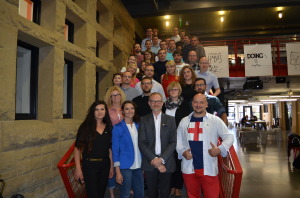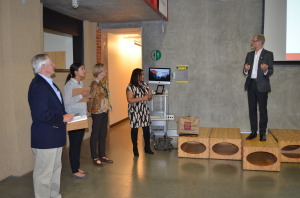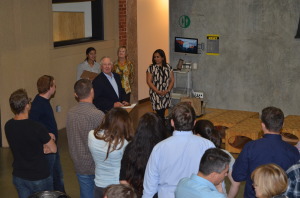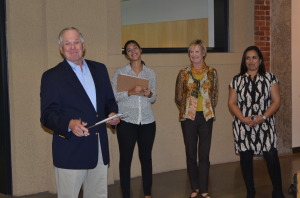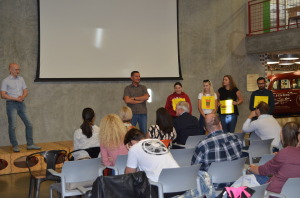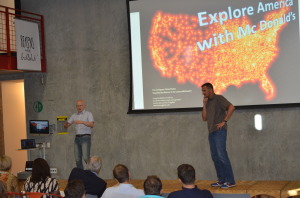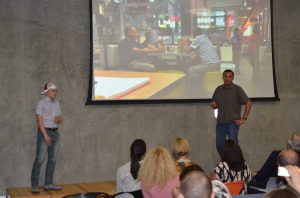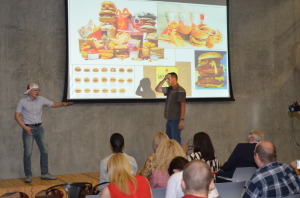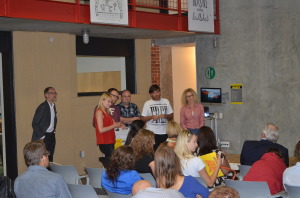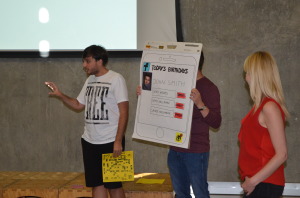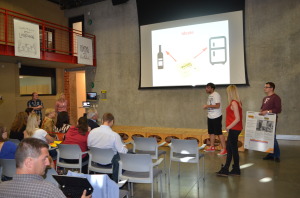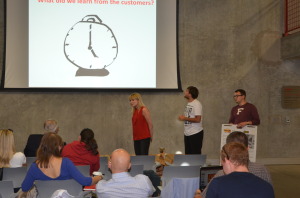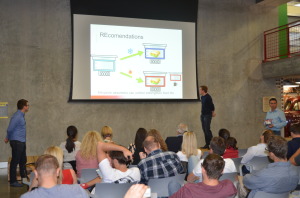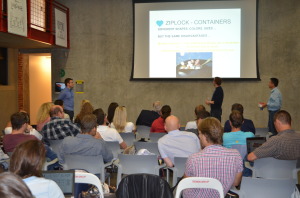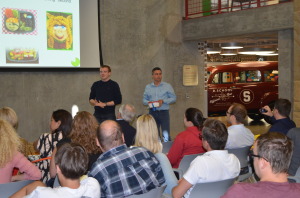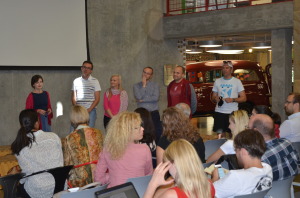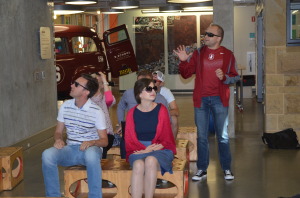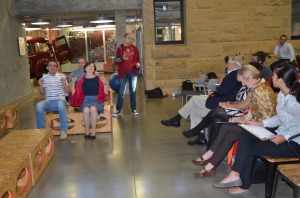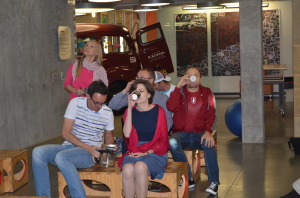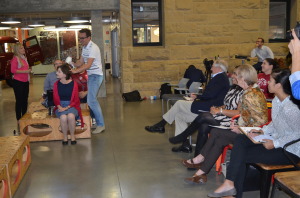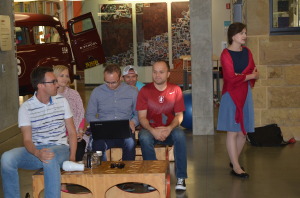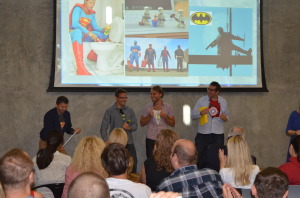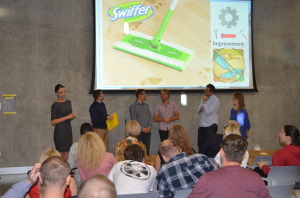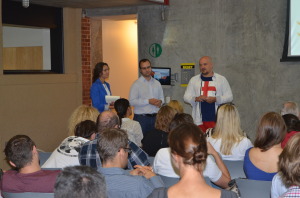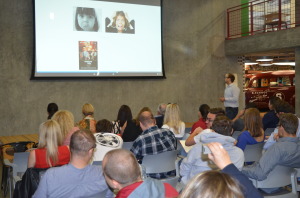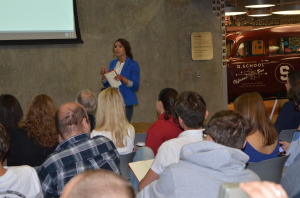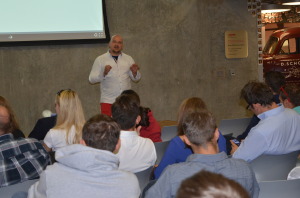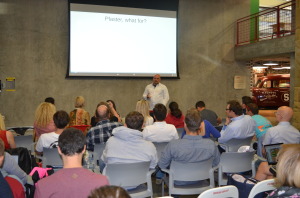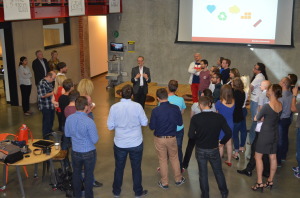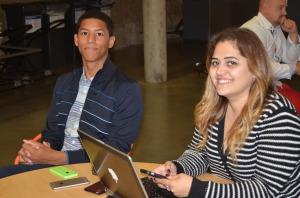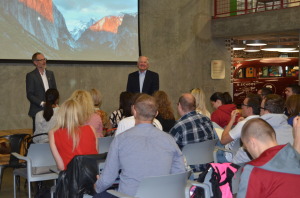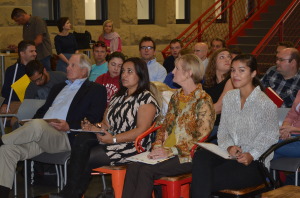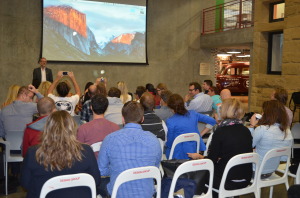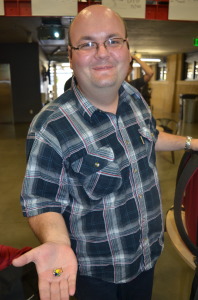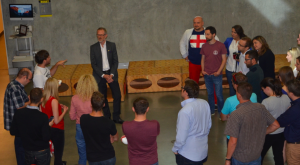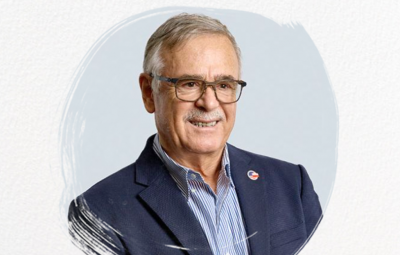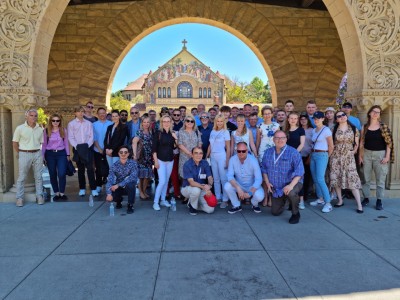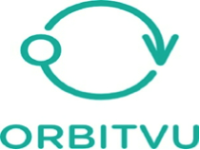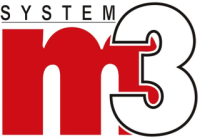Don’t fear to be wrong. Reflection on Poland’s Top 500 Innovators’ course in Design Thinking at Stanford University.
By Ela Kozera
Don’t fear to be wrong. Fear not to have courage to try to be wrong, said Mr. Jeremy Sabol, lecturer at Stanford University. With this motivational punch line, Top 500 Innovators completed a five-week-course in Design Thinking at Stanford University.
This class was a wonderful experience in hands-on work on multiple mind-blowing, eye-opening and heart-touching projects. The course participants had to find a part of a curious child in themselves by opening their minds to a different universe of design thinking. At the beginning, it was not an easy task for many to stop criticizing their “inner ego” in generating new ideas, to think out of the box, and to see and hear things that other people do not see and hear. By putting themselves into designers’ shoes, the Top 500 Innovators worked on diversified team projects by looking at constrains of feasibility, viability and desirability as opportunities. They realized that great results of a collective teamwork are supported by the clarity of a team’s collaboration and communication as well as its dynamics, size and direction. They recognized that often the first idea is not the best one. They also discovered that operating in an interdisciplinary team makes them smarter and jointly responsible for the outcome. In every project, each group member was encouraged to learn from another and to see different models for every problem by coming out with captivating and, sometimes, amusing solutions. They noted that, most of the time, redefinition of a problem and its evolution through failures results consequently in a much better solution. In a design thinkers’ world, failures are part of an acceptable and encouraged process in defining an effective solution. Over the length of the course, its participants acquired a set of tools to help them look at every problem – as a design problem and experienced skills needed in a designing process such as empathy, ideation, iteration and prototyping.
On October 21, 2015, the participants presented their final group projects in front of the jury at the Institute of Design at Stanford University. Six groups presented new and improved versions of the products currently available on the market: Band-Aid – sticking SoulPlaster, Swiffroid – make the cleaning fast and easy with Swiffer, the Fiat Abarth – have-it-all in one car, Ziplock-containers, Hallmark cards, and the next great McDonald’s burger. Highly motivated and optimistic groups came out with creative and productive solutions by redefining traditional products, and yes, there was a high level of creative energy and a contagious experience of enthusiasm and fun.
I am deeply convinced that all Top 500 individuals are inspired and motivated by Mr. Jeremy Sabol’s teachings as much as I am. To make that point, when Mr. Sabol asked the group: “What is the ONE thing you found most valuable in this course? The Top 500 Innovators said concordantly: YOU! I definitely add my voice to that loud crowd.
The Top 500 Innovators had five weeks of unforgettable design thinking experience, which changed their way of thinking. Now, the Top 500 Innovators know that the most difficult part is to step out of their safe way of thinking and acting and to start fearlessly redefining things in their workplaces DNA. By being official design thinkers, it is time for the Top 500 Innovators to incorporate that design practice back in Poland.
On my part, following a famous dictum stated by Socrates: “The unexamined life is not worth living,” thank you, Mr. Jeremy Sabol, for presenting me with new ways of examining the world around me and, hopefully, for helping me to make it a better place to live.

